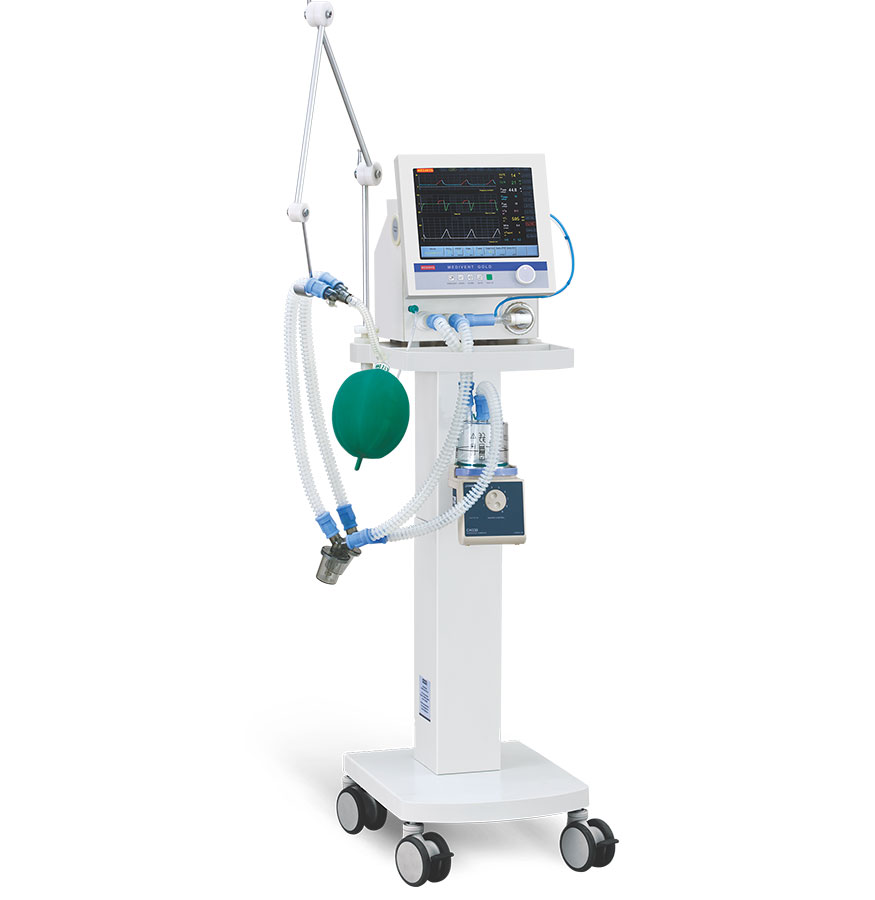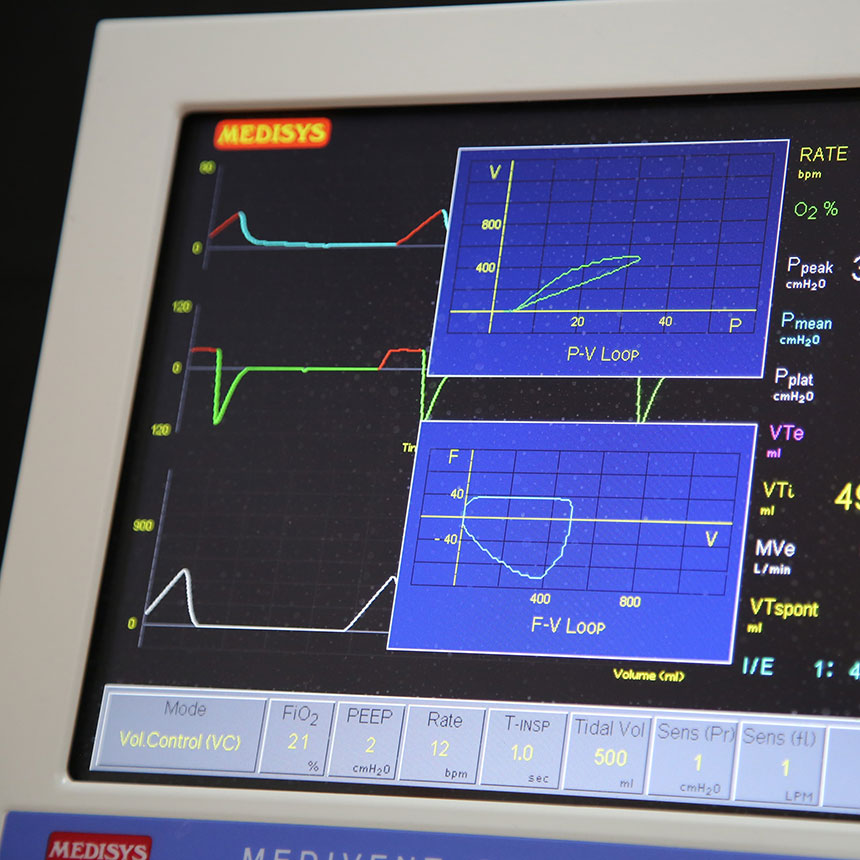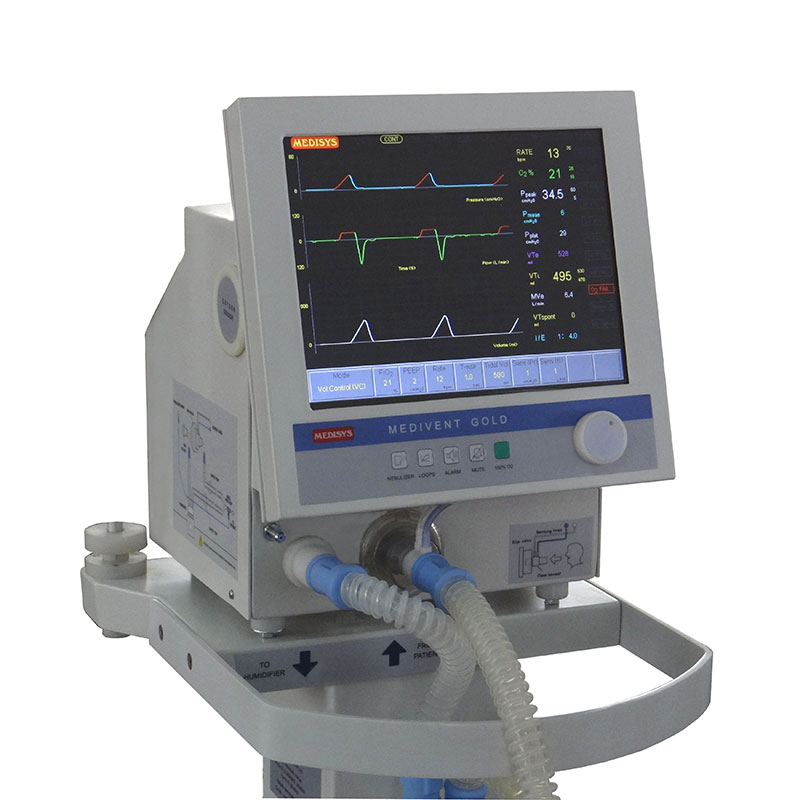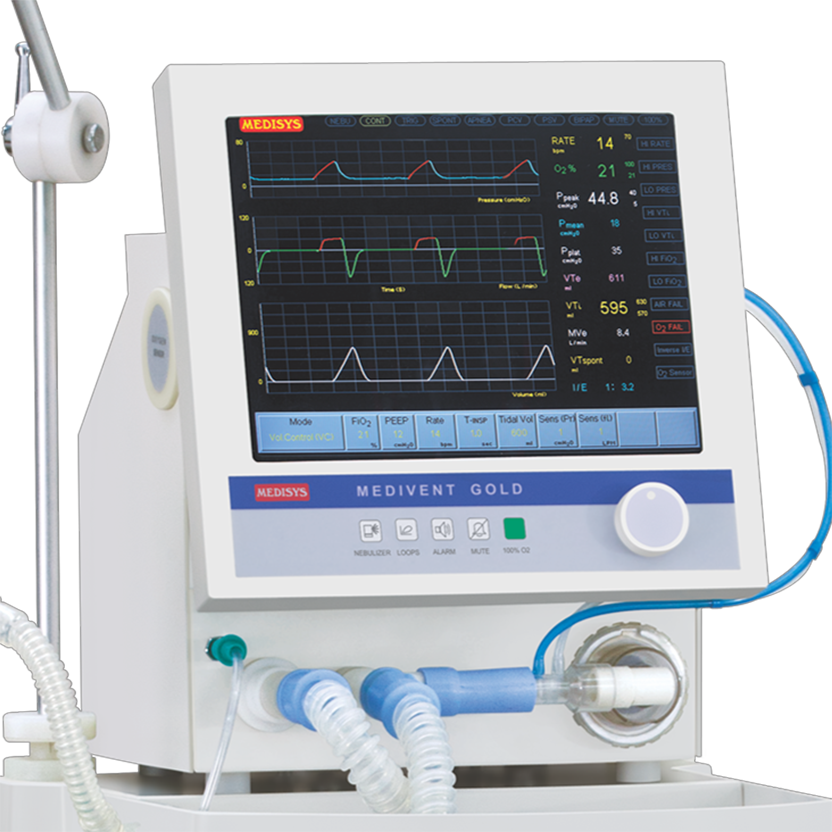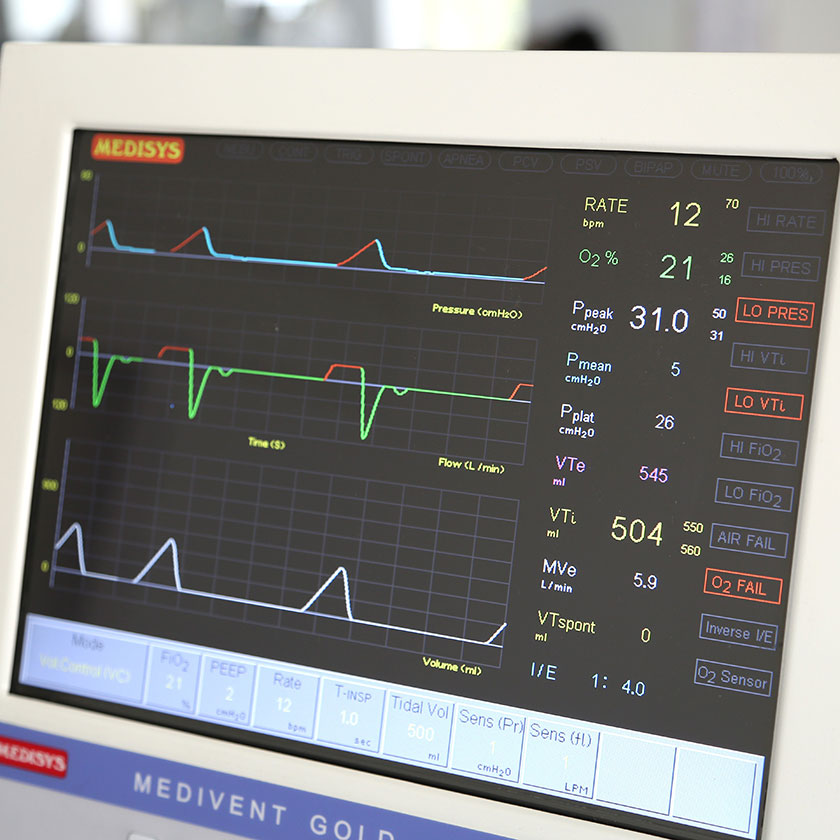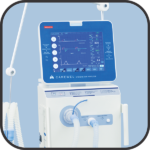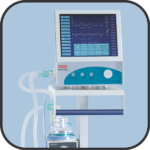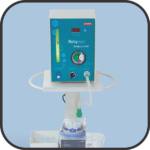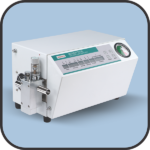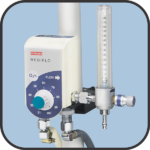Medivent Gold
Intensive Care Ventilator
It is an advanced ventilator with features to provide efficient respiratory support to critically ill patients. The concept of breath to breath correction is remarkable for accurate delivery of tidal volume. Automatic change-over between controlled and support ventilation corresponding to breathing pattern is also noteworthy. Highly sensitive sensing devices ensure better synchrony with the patient. The addition of NIV makes the ventilator very versatile.
Features
The ventilator offers several control and support modes along with their combinations. There is a choice of interactive mode also where control and support modes can be switched automatically. This is helpful when the patient has insufficient spontaneous activity and immediate switching to corresponding control mode is desired to sustain life.
It also provides non- invasive ventilation (NIV) as well, to avoid complications associated with the invasive ventilation.
Finally, the ventilator has Airway Pressure Release Ventilation (APRV) which maintains a CPAP for a longer duration to recruit the alveoli and optimize oxygenation. The CPAP is released for a very short duration to wash out CO2 intermittently. It is essentially a pressure control mode and works with strategy of IRV. The mode is relevant for patients with acute lung injury/ARDS.
The breathing effort of the patient can be detected by fall in pressure or the flow of gas towards the patient. On detection of either these phenomena, the ventilator initiates the mechanical breath. The triggering is very effective as either of the two factors are considered, instead of only one.
Blending of air and oxygen is done by precise regulation of the flow of gases with the help of advanced proportional valves. The controller does it depending on the closed feedback provided by the oxygen sensor. The closed feedback makes the blending accurate although outflow may vary widely.
NIV is preferred at times to avoid the complications associated with intubation. It is so designed to provide the desired inspiratory and expiratory pressure levels called IPAP & EPAP to support the ventilatory demand of the patient.
The cycling between IPAP and EPAP follows the patient’s breathing pattern and provides patient-ventilator synchrony. It reduces the Work of Breathing (WOB).
Specific masks are used for the purpose to maintain the NIV. The Apnea Backup Ventilation is active in this mode.
The role of NIV to treat cases of Sleep Apnea is noteworthy.

The actual tidal volume delivered by a mechanical breath also varies with changes in lung characteristics. To nullify this effect, the unit applies ‘Breath-to-Breath’ correction. The process involves monitoring each mechanical breath and providing the appropriate variation in tidal volume subsequently so that overall desired ventilation is maintained.
Benefits: Ensures adequate ventilation despite changes in lung characteristics. Ventilating an obese or a patient in prone position is easy to perform.
Calibration of oxygen cell is desired for monitoring FiO2 correctly, as the cell gets affected with continuous exposer to oxygen. The ventilator thus performs the required calibration at the very start. However, the operator has the option to skip.
This is an option for the operator to start the ventilator with default settings depending on ideal body weight. It helps the operator not to divert its attention from the critical patient. However the set parameters can be modified conveniently later.
Dual gas source of oxygen and air is required for driving the ventilator. However it is designed to continue ventilation even in case of failure of either of the gases. To maintain the optimum ventilation, the available gas takes over the failed gas. The lack of proper air/oxygen mixing, the FiO2 remains affected till the failed gas is restored.
The backup has been provided for running the ventilator in the event of sudden failure of electricity. However, it is not applicable to run accessories like air compressor or humidifier. Backup of 5 hours approximately is available using a Lithium ion battery.
The compressor is an optional accessory. It may be integrated mounting the ventilator on it. The compressor then works as the mobile trolley for the ventilator.
The compressor runs continuously for suppling oil-free air @ 40-50 lpm at 50 psi. It uses a device based on Peltier effect for making the outflow dry. This helps avoiding damage to the critical valves sensitive to moisture.
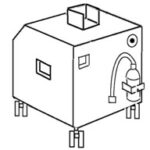
| Driving Source Air and Oxygen at 3 to 4 kg/cm2 |
| Modes VC, PC, PRVC, PS, VS, SIMV(VC) + PS, SIMV(PC)+PS, SIMV(PRVC)+PS, 2PAP + PS, NIV, APRV & Auto-Shift Interactive |
| FiO2 21 to 100% |
| Tidal Volume 50 to 1500 ml |
| Frequency 1 to 50 breathes/min |
| Inspiratory Time 0.4 to 3 seconds |
| Plateau Time 0 to 3 secs |
| PEEP 0 to 30 cmH2O |
| Sensitivity 1 to 10 cmH2O , 1 to 10 LPM below PEEP |
| PCV 0 to 40 cmH2O |
| PSV 0 to 30 cmH2O |
| 2PAP EPAP 0 to 30 cmH2O, IPAP 0 to 40 cmH2O at Frequency 1 to 50 per min & IPAP time 0.3 to 3 seconds. |
| APRV 5 to 40 cm H2O @ 1 to 50 per minute |
| Alarms High/low pressure, high/low VT, high/low FiO2, oxygen/air failure, patient disconnection & Apnea |
| Patient data Insp. Tidal volume, Exp tidal Volume , VT(Spont), PIP, Plateau pressure, MAP, Rate, FiO2, & I/E ratio |
| Indications Functional Events, Air /O2 fail, Faulty O2 sensor, Inverse I/E ratio |
| Humidifier Heated |
| Power input 200-240 VAC, 50 Hz |
| Battery Backup 5 hours (control module) |

